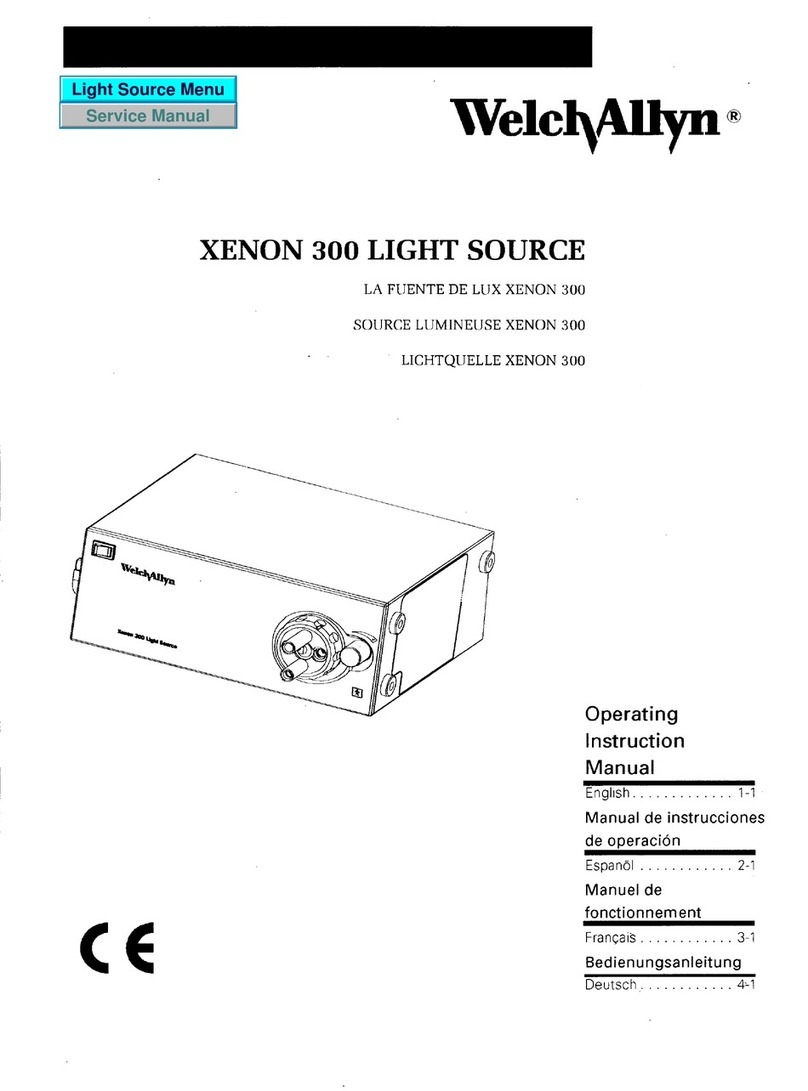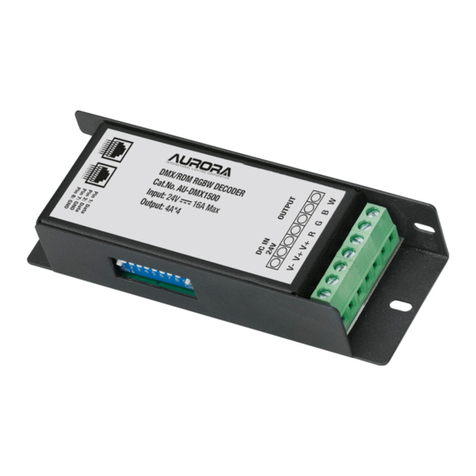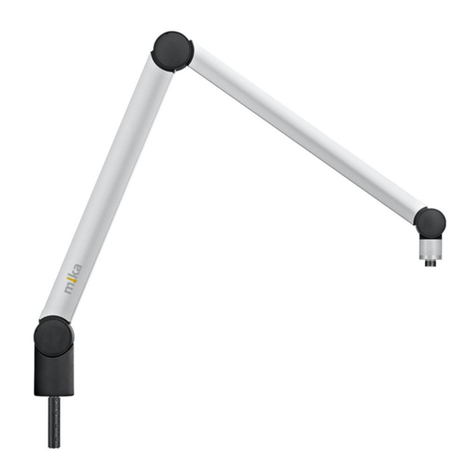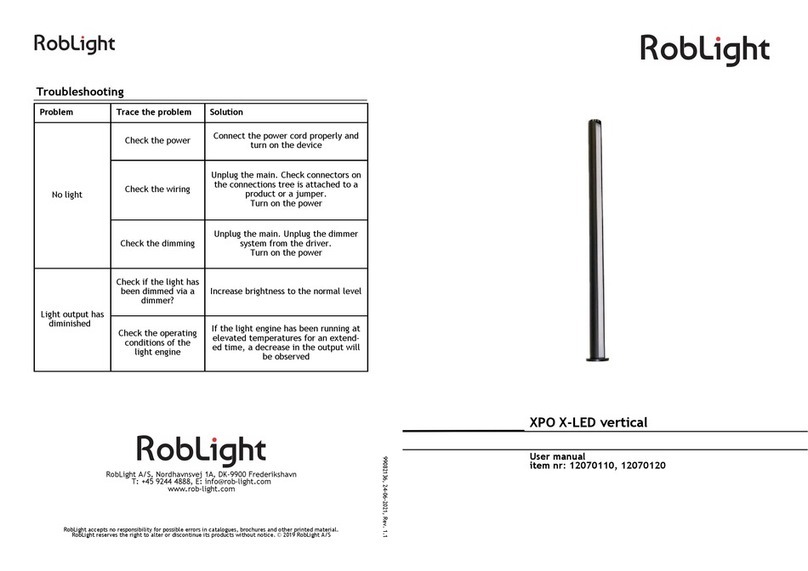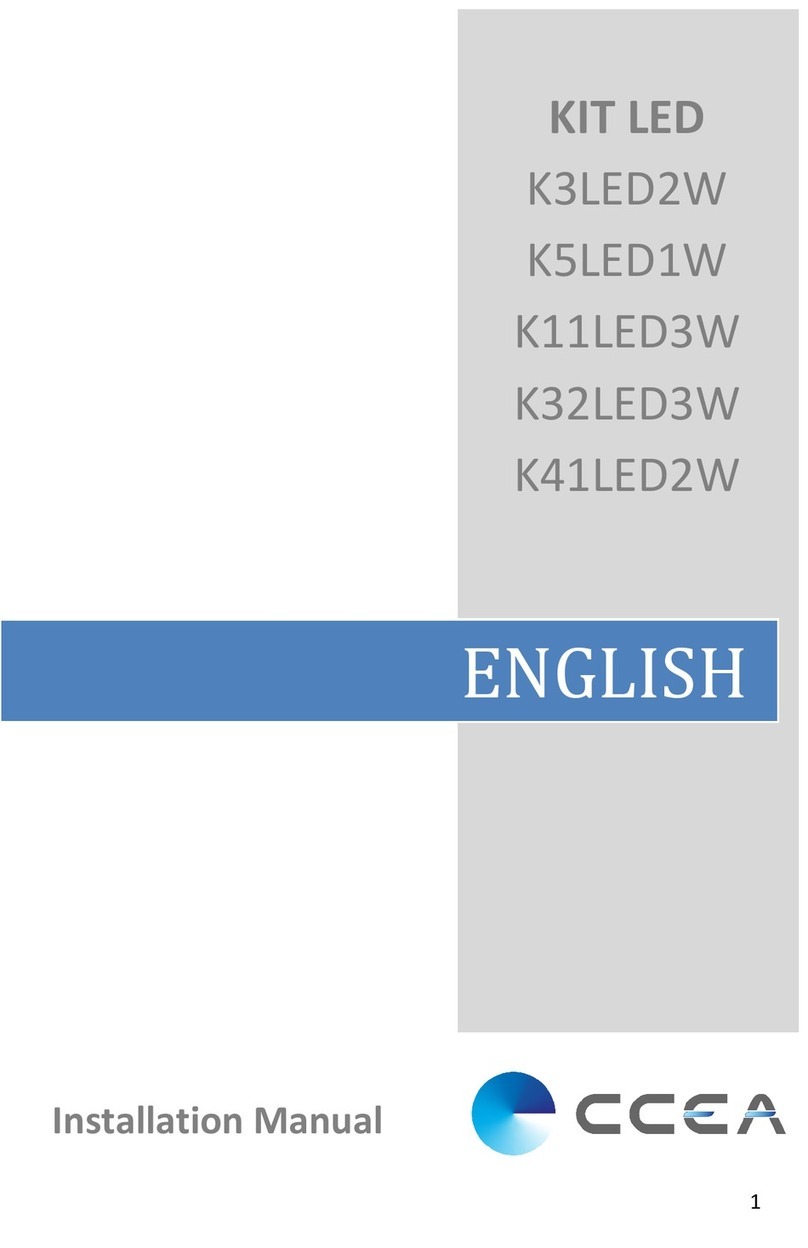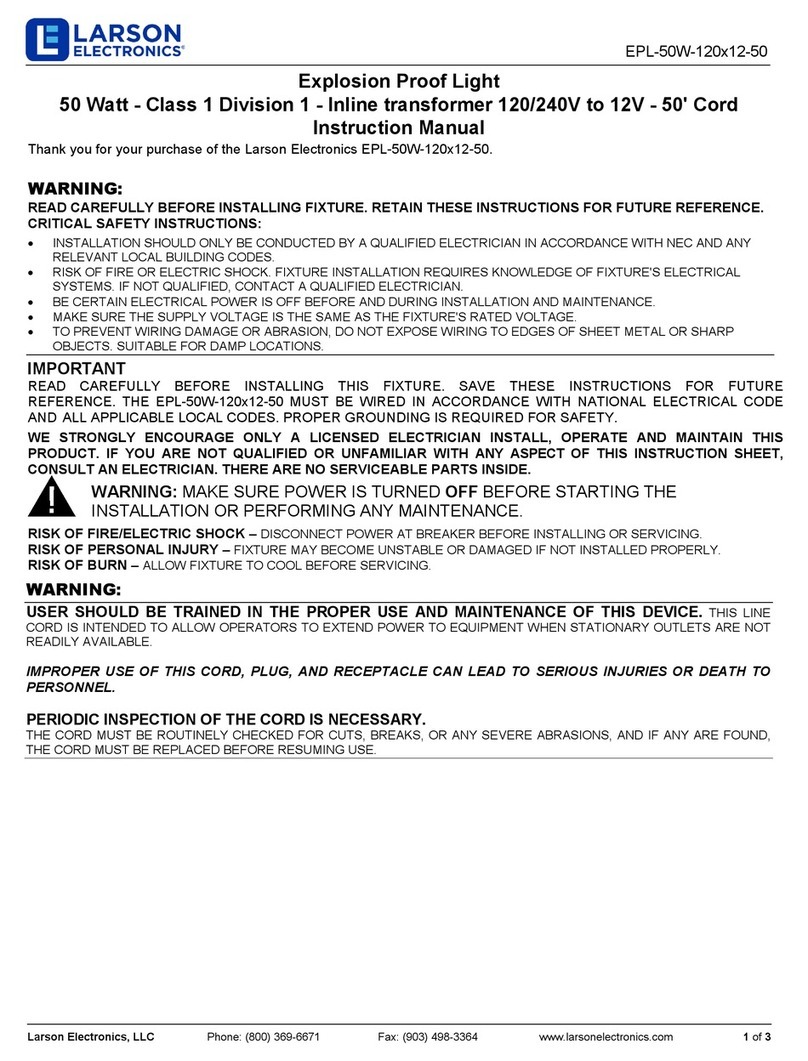GiBiDi DPT260 Manual

DPT260
DPT260
UK
Automatic bollards
FITTING, OPERATION AND
MAINTENANCE INSTRUCTIONS

DPT260
2
• Read carefully this manual before starting the installation and save it for future reference.
• Packaging materials (plastic, polystyrene, etc…) must be kept out of reach of children, because potentially
dangerous.
• This product have been designed and manufactured only for the use shown in this documentation. Any other use,
different from what expressly indicated could damage the integrity of the product and/or be potentially dangerous.
• Gi.Bi.Di S.r.l. is not responsible for any damage caused by improper or different use than that for which the
automated system was intended.
• Do not install the device in an explosive area: the presence of gas or inflammable fumes is a serious danger for
safety.
• The installation must be performed in compliance with the law in force.
• In the extra-UE countries make also reference to the national law.
• Gi.Bi.Di. S.r.l. is not responsible for any non-compliance with the correct installation procedure of GiBiDi products
and accessories, as well as for any deformation that can occur while using.
• Before performing any operation on the installation, disconnect the main power supply.
• Place a 0.03A magnetothermic differential switch with an opening distance between contacts equal to or greater
than 3 mm to power the control unit.
• The main power supply line of the control unit must be directly connected to the main switch set inside the control
unit. Use approved anti-flame cable. The dimension of the main power supply line must be evaluated by the
installer according to the quantity of bollards (500W each bollard) and the distance from the output place, in order to
grant a proper supply (230V +/-10% per each moving bollard).
• Check that there is a suitable earthing and place/connect an earthing line to the terminal PE in the control unit.
• Every bollard is equipped with a safety pressure switch. The pressure switch operates the inversion every time it
detects a mass of at least 40 Kg on the head of the bollard while rising. In any case it is recommended to check the
activation level every six months.
• Each installation should have: a light signaling such as the flashing light integrated in the head of the bollard – an
acoustic buzzer that signals the bollard in movement – a traffic light (red – green) for each direction of transit – a
signpost for each direction of transit.
• For the maintenance use only original GiBiDi spare parts.
• Gi.Bi.Di. S.r.l is not responsible in terms of safety and good operation of GiBiDi products, in case of use of
nonoriginal GiBiDi spare parts.
• Do not perform any modification to the parts composing GiBiDi system.
1 - NOTES ON INSTALLATION
WARNING: IMPORTANT SAFETY REGULATIONS.
It is important to follow these instructions carefully to ensure safety of persons and belongings. A faulty
installation or an incorrect operation of the product may cause serious damages to people and
belongings.
These instructions are for experts only, for someone who is able to complete fitting, operation and
maintenance in full safety conditions.
UK

DPT260 3
• The installer must provide to the customer all the information related to the manual lowering of the bollards in case
of need.
• Do not allow people and children to stop close to the bollards during operation.
• Keep radio transmitters and any other control devices out of the reach of children in order to avoid any unintentional
operating of the bollards.
• The transit is allowed only with the bollards completely down.
• The customer must avoid any repair or direct intervention and must address to qualify and authorized personnel.
• Do not throw the exhausted batteries in the garbage but dispose them in the proper containers to allow recycling.
• The bollards are packed on euro pallet. Use specific equipment or forklift for movement; handle with care.
• GiBiDi bollards are manufactured with IP 66 or superior protection class and can be stocked everywhere, also
outdoor. It is however recommended to stocked the bollards in close or covered places.
• Pilomat bollards are designed to resist to transport and stocking effects in a range between -25°C and +55°C and
for a determined time (less than 24 hours) at +70°C.
• The bollards do not require any availability of spare parts: Gi.Bi.Di. S.r.l warehouse can send any spare parts in
quick times.
• In case of maintenance or repair of the bollards, be sure to avoid any inappropriate rising control. To avoid
problems, disconnect the controls through the appropriate switch set in the control unit.
Any procedure not explicitly stated in these instructions is forbidden.
UK
The trash container symbol shown on the product label, on the product or in the instructions indicates that the
product, at the end of its life, must be disposed separately from other waste products.
The end user must therefore bring the item to an authorised electronic waste disposal centre, or return it to the dealer
when new equivalent product is purchased.
Proper separate collection for recycling, treatment or compatible environmental disposal contributes to avoid
negative effects on the environment and health, moreover it favours reuse and recycling of the materials the product
is made of.
Improper disposal of the product is subject to fines.
2 - DISPOSAL

4DPT260
UK
3 - BOLLARD DATASHEET
Bollard DPT280
Moving cylinder material
S235JR steel
X5CrNi18-10 stainless steel (AISI 304)
X5CrNiMo17-12-2 stainless steel (AISI 316)
Moving cylinder diameter 273 mm
Moving cylinder height 600 mm
Moving cylinder normal steel thickness 6 mm
Moving cylinder stainless steel thickness AISI 304: 6 mm - AISI 316: 4 mm
Moving cylinder normal steel finish
Anti-corrosion treatment
(optional: other RAL colour on request)
Grey anthracite standard painting
Moving cylinder stainless steel finish Anti-corrosion treatment -
Grey anthracite standard painting or brushing
Other moving cylinder finish Ribs on cylinder’s surface (optional)
Reflecting adhesive strip Standard - height 55 mm
Rising speed 15 cm/s
Lowering speed 25 cm/s
Manual emergency lowering Standard
(optional: automatic lowering if power failed)
Safety reversal pressure switch Standard
Connection line to control unit Standard 10 m
(max. lenght 80 m - with heating resistance )max. 50 m
Hydraulic pump for movement Built-in into the bollard
Hydraulic pump absorption 230V +/- 10% - 2.2A (max. 3.4A)
Hydraulic pump thermal protection Standard
intervention threshold 120°C - automatic recovery 80°C
Protection class IP67
Type of use Intensive - 2,000 movements/day
Life average - MCBF 3,000,000 movements
Impact resistance (without deformation) 40,000 J
Breakout resistance 250,000 J
Nominal operating temperature from -40°C to +70°C
(for temp. lower than -10°C use the heating resistance)
Relative humidity operation range from 10% to 80%
Max. altitude in operation 1,500 m above s.l.
Operation maximum noise 60 dB
Weight included 10m connection line and pit 120 Kg
Weight of the pit 43 Kg

5
DPT260
4 - BOLLARD COMPONENTS
40
600
275
940
560
560
SOLENOID VALVE
RISING
SIDEBLOCK
LOWER
LIMIT SWITCH
LOWER
SUPPORT BASE
REFLECTING
STRIP
FLASHING LIGHT
HEAD
MOVING
CYLINDER
FRAME
PASSIVE BOX
PISTON
HYDRAULIC
PUMP
UK

6DPT260
5 - INSTALLATION PROCEDURE
190 mm200 mm300 mm
1200 mm
1000 mm
1000 mm
Quota di calpestio
10 mm
SENSO DI TRAFFICO
TRAFFIC WAY
ø 50 mm
PIC. 1
PIC. 2
PIC. 3
PIC. 5 PIC. 4
UK

7
DPT260
5 - INSTALLATION PROCEDURE
UK
PIC. 6
FOUNDATION
BRACKET
CONTROL
UNIT
JUNCTION BOX
400 x 400 mm
FLEXIBLE SHEATH
diameter 50 mm
max. 1600 mmmax. 1600 mm

8DPT260
5 - INSTALLATION PROCEDURE
UK
WATER
DRAINAGE
TRAFFIC WAY
BOLLARD
COUNTERFRAME
ANCHORING
PLATE
50 mm SHEATH
FOR ELECTRICAL
CABLES
WALKING
LEVEL
ROAD
SURFACE
ADDITIONAL
CONCRETE
CASTING
SUPPORTING
SLAB
M8 CHEMICAL
ANCHORS
M16
CHEMICAL
ANCHORS
WATERPROOF PIT
IN STAINLESS STEEL
WATERPROOFING
SHEATH
10 mm
50 mm 600 mm
275 mm
450 mm
500 mm
925 mm
AB
700 mm
700 mm
450 mm
450 mm
“A” dimension is the sum of the different thicknesses of which the slab is made of.
PIC. 7

9
DPT260
PIC. 8
PIC. 10 PIC. 11
PIC. 9
M16
M16
5 - INSTALLATION PROCEDURE
UK

10 DPT260
5 - INSTALLATION PROCEDURE
min. 25 cm
95 cm
95 cm
95 cm
95 cm
3,00 m 1,80 m
280 cm 200 cm
80 cm
80 cm
5,5 cm
9 cm
15 cm
~15 cm
~15 cm
PIC. 12
PIC. 14
PIC. 16
PIC. 13
PIC. 15
PIC. 17
Control
Unit
UK

11
DPT260
5.1 - TESTS BEFORE INSTALLATION
5.2 - SOIL PERMEABILITY
Premise
The bollards and the related pits are usually shipped already assembled.
Bollards, control unit and eventual accessories are usually packed on Europallet.
The use of a fork lifter or similar is recommended for pallets movement..
Subsoil check
Before proceeding with the installation of the pits, ensure that the laying point of the bollards respects the following
characteristics:
1. Absence of aquifer in the subsoil.
2. Absence of pipes or elettrical cables.
3. Presence of an efficient earthing system.
In case bollards are laid on an inclined area, it is necessary to install, before the bollards and in the immediate
surroundings, a drainage channel complete with covering grid (to avoid rainwater infilitrations in the pits due to
incline).
An important factor in the installation of bollards, prior to the assessment of the permeability of soil in relation to the
drainage of rainwater, is that it should determine in advance whether the permeability of the ground covered by the
installation is within acceptable parameters.
To confirm the practise of soil permeability, it is recommended that before the installation, the excavation is
carried out at about 40 litres of water per m2, and ensuring that it flows into the ground at about 30 minutes.
If the result should be negative, build a water drainage system by using a 50mm pipe connected to the sewer system.
As an alternative, connect the pipe to a “pit for rainwater collection” placed at a greater depth than the bollard pit,
equipped with an immersion pump and a float for the automatic operation command.
UK

12 DPT260
1. Dig an excavation of about mm 1000 x 1000 section and of 1200mm depth (PIC. 1).
2. Ensure that the soil has a good permeability (read the specific procedure at chapter 5.2).
NOTE: it is recommended to read chapter 5.1 “tests before installation”.
3. Add gravel for approx. 300mm (grain diameter from 8mm to 20mm approx.), make sure to vibrate and to
compact it accurately to avoid any future ground settling (PIC. 2).
4. Lay the metallic pit equipped with counterframe and brackets, paying attention to:
• Arrange the pits according to the transit direction as indicated on the counterframe (PIC. 5).
• Check that the pits are correctly plumbed (PIC. 2).
• Ensure that the counterframe is 10mm higher than walking level (in order to limit rainwater infiltrations into the
pit). To arrange the pit at the suitable height, add or remove gravel under the pit (PIC. 3).
5. In case of installation with multiple pits, ensure that they are all well alligned and oriented in the same direction
(PIC. 6).
6. Add gravel all around the pit for about 200mm to avoid any obstruction of the drainage holes, placed at the
bottom of the pit, during the concrete casting.
7. Lay a flexible sheath of 50mm diameter from each pit to the control unit for the electrical connection of the
bollards (PIC. 2 and 4).
WARNING! If the distance between pits and control unit is more than 10m, purchase the bollards equipped
with electrical connection lines of the suitable length (standard length 10m – optional: up to 80m).
8. In case an “immersion pump” is needed (as described in chapter 5.2), lay a 50mm diameter sheath from the “pit
for rainwater collection” to the control unit and connect the drainage pipe to the sewer system or similar. Take
into account the installation of a non-return valve or similar, to avoid any flow back into the pit.
9. Arrange correctly the brackets supplied with the pits (PIC. 4).
10. Cast concrete all around the pits until 100mm under the walking level (evaluate this quota according to the type
of road surface).
NOTE: it is recommended to cast concrete in two steps to avoid the lifting of the pits due to flotation in liquid
concrete. It is also recommended to vibrate the concrete to compact it properly.
11. Lay any additional pipe from the control unit to the installation point of the accessories (i.e. inductive loops, traffic
lights, consolle, etc.). Prearrange the electrical connection and the earthing to the control unit.
12. Once the concrete has solified, carry out the road surface finish.
All the pipelines shall be laid in full compliance with the regulations in force.
5.3 - LAYING OF THE PIT
UK

13
DPT260
5.4 - LAYING BOLLARDS ON SLAB
5.5 - LAYING OF THE BOLLARD
In case of laying on slab (PIC. 7) it is necessary to purchase the specific “kit for installation on slab”. The instructions
are as follows:
1. Mark the laying point of each bollard, then remove the road surface/concrete casting for about mm 1000 x 1000.
Remove the waterproofing sheath in the middle of the laying point for about mm 500 x 500; take into consideration
the consecutive restoration.
2. At the moment of purchasing, communicate the thickness of the slab in order to let the manufacturer produce a
stainless steel waterproof pit of a suitable length (see PIC. 7 ref. A and B).
3. In the center of the laying point remove the slab by drilling a through hole of about mm 450 x 450.
4. Place the counterframes equipped with anchoring plate in the center of the through hole. Secure it by means of 12
M16 chemical anchors (supplied by the building contractor) complete with supplementary nuts for the proper
leveling of the counterframe/anchoring plate with respect to the walking level (to limit rainwater infiltrations into the
pit, arrange the counterframe approx. 10mm higher than the walking level).
5. Restore the waterproofing sheath, the additional concrete casting and the road surface.
6. By means of 8 M8 chemical anchors (supplied by the contractor), secure the stainless steel waterproof pits to the
ceiling of the basement.
7. Lay the pipes for the electrical cables from the bollards to the control unit.
8. Lay the pipes for rainwater drainage from the waterproof pits to the drainage area.
9. Lay the additional pipes from the control unit to the installation point of the accessories (i.e. inductive loops, traffic
lights, consolle, etc.). Prearrange the electrical connection and the earthing to the control unit.
All the pipelines shall be laid in full compliance with the regulations in force.
1. Lay the bollards in the immediate surroundings of the pit.
2. Lay the connection cables of each bollard in the flexible sheath and drive them until the control unit.
3. Secure the electrical cables inside the pit by means of the specific cable clamp. The cables must be fasten at the
point indicated by the blue sticker (PIC. 8).
WARNING! Make sure to secure the cables as described above. Fastening the cables in different positions may
cause a faulty operation of the bollard.
4. Secure two M16 hooks (not supplied) into the specific threaded holes (PIC. 9).
5. Lift the bollard by means of chains/belts, paying attention to hang them accurately to the hooks; then lay the
bollard into the pit (PIC. 10).
6. Make sure that the connection cables are arranged according to the suggested shape (PIC. 11).
7. Once the bollard is inside the pit, remove the hooks and secure the bollard by means of the screws supplied; then
apply the plastic caps supplied on the top of the screws.
8. Carry out the electrical connections to the control unit as described in chapter 6.2.
UK

14 DPT260
5.6 - LAYING OF INDUCTIVE LOOPS
If the system is set on automatic mode (bollards rise only after the occurred transit of a vehicle) it is
necessary to install inductive loops to detect metallic masses (vehicles).
Inductive loops are suitable for two different applications:
• “Limited” protection of the bollards (PIC. 12 - PIC. 13). In this case a single inductive loop is installed around the
bollards, it avoids the raising in case a vehicle is over the bollards or in the immediate surroundings.
• “Extended” protection of the bollards (PIC.14). In this case two inductive loops are installed, one before and one
beyond the bollards; a vehicle in motion is detected about 3m before the bollards and the detection is enabled up
to 3m beyond the bollards. This function let the system detect in advance any other vehicle in transit and avoid any
eventual accident.
Notes on the installation:
1. Standard inductive loops are 9,60m long (usually m 1,80 x 3,00); therefore it is possible to take into account other
dimensions.
2. The inductive loop is made of a special cable of 9mm diameter and it is suitable for the direct laying into the
ground, without any sheath nor protection.
3. It is essential to check the presence of electro-welded meshes into the ground. If this is the case, you shall remove
the mesh for about 25cm beyond the perimeter of the inductive loops (PIC. 16).
4. Inductive loops shall be laid with “rounded corners” (PIC. 16 - PIC. 17).
5. Inductive loops shall be laid approx. 7cm under walking level. In presence of cobblestones or similar, of 10mm
thickness or greater, it is necessary to flatten out that material in order to allow the laying of the loops at the
suggested depth. As an alternative, it is possible to lay the inductive loop between one cobble and onother like a
“Greek fret”.
6. Inductive loops are supplied with a junction box (PIC. 15) which is connected to to the control unit through a line for
signal transmission. This line is made of a special insensitive cable which has a standard length of 15m (it is
possible to purchase lines of greater lengths).
7. Inductive loops can also detect an outbound vehicle and therefore carry out the automatic lowering of the bollards.
UK

15
DPT260
In order to connect all the electrical devices, a passive box with six connections is installed on the bollard frame.
The wires of these devices are marked out by different colours.
For the correspondence see the wiring diagram (PIC. 19 ).
6 - ELECTRICAL CONNECTIONS
6.1 - BOLLARD WIRING
No.
1
2
3
4
5
6
Colour
BLUE
GREY
YELLOW
BLACK
WHITE
RED
Device
FLASHING LIGHT – BUZZER (optional)
SOLENOID VALVE FOR LOWERING*
SAFETY PRESSURE SWITCH
LIMIT SWITCH BOLLARD DOWN
LIMIT SWITCH BOLLARD UP (optional)
HEATING RESISTANCE (optional)
* Standard solenoid valve: N.C. = in absence of power supply the bollard remains in up position
Optional solenoid valve: N.O. = in absence of power supply the bollard automatically lowers (gravity effect).
White
Yellow
Blue
Red
Black
Grey
PIC. 18
UK

16 DPT260
6.1 - BOLLARD WIRING
UK
Shield = PE
*interchange is possible
*Brown
*Black
Yellow
Blue
Purple = Heating resistance 80W
Blue = 0v Buzzer
Grey = Sensor for detecting bollard up position ( c )
Green = Pressure sensor
Black = 0v LED (ashing light)
Purple = Heating resistance 80W
Red = Solenoid valve 24Vdc
Brown = DOWN position
Black = UP position
Yellow/Green = Grounding
Grey = Common for motor
Red = + 24V common
White = Sensor for detecting bollard downposition
Grey = Sensor for detecting bollard up position (nc)
Red = Solenoid valve 24Vdc
1
3
2
4
2
4
2
4
4
2
1
1
2
4
2
6 BROWN5 WHITE
3 YELLOW
1 BLUE 2 GREY
Hydraulicl unit
4 BLACK
M12
1
3
4
2
1
3
4
2
1
3
4
2
1
3
4
2
2
1
3
4
2
1
3
4
M11 M9 M4
M14 M6
113 4
15 14
16 10
x11 2
x9
+
M19
M
M20
M1M3
M13 M5 +
7 8
6
4
13 24
M17M18 M10 M2
5 WHITE Sensor for detecting
bollard up position
3 YELLOW Safety pressure
switch
1 BLUE Flashing light
and buzzer
6 RED Heating resistance
4 BLACK Sensor for detecting
bollard down position
2 GREY Lowering solenoid
valve
J12T6B5-PG135-WL-PIL
PASSIVE BOX
PIC. 19

17
DPT260
The control unit is supplied in a metallic housing to wall.
The housing has usually an IP56 or IP66 protection class. Whether possible, indoor installation is recommended, as
an alternative, ensure to protect it from bad weather and direct sun exposure.
The dimension of the housing may vary according to the system configuration (see chart “Housing dimension” -
chapter 6.4).
In case of need, other housings for control unit are available as optional, such as: floor housing with rectangular base,
cylindrical floor column with diameter 275mm, etc.
6.2 - CONTROL UNIT
6.3 - CONTROL UNIT DATASHEET
6.4 - HOUSING DIMENSION
UK
Note 1: dimensions listed in the table above refers to control units with standard configuration; dimensions may change if bollards are equipped with
optional items such as timer programmer, transformer for heating resistance, etc..
Note 2: please contact Gi.Bi.Di. S.r.l. for more information about control units for installations with more than 5 bollards (i.e. control unit for 8 bollards).
Electronic circuit
Standard housing for control unit
Protection class
Power supply
Control unit protection
Service transformer
Permitted ambient temperature
Relative humidity function range
Quantiy of bollards connected to control unit
(bollards connected to a unique control unit always move in synchro.
It is not possible to move them individually)
microprocessore with specific management software
to wall
IP66
230V +/- 10% - 50/60 Hz
Magnetothermal differential switch 1P + N - 6kA
24V - Standard power 100 VA
from -15°C toa +60°C
from 10% to 80%
The control unit has no configuration limits, since for each
installation there is one master unit, connected to the first
bollard, and a slave unit for each additional bollard
Configuration
SP1 - system with 1 bollard
SP2 - system with 2 bollards
SP3 - system with 3 bollards
SP4 - system with 4 bollards
SP5 - system with 5 bollards
Material IP class Dimensions
ABS IP 56 400 x 300 x h. 130 mm
Steel IP 66 500 x 400 x h. 200 mm
Steel IP 66 600 x 400 x h. 200 mm
Steel IP 66 700 x 500 x h. 200 mm
Steel IP 66 700 x 500 x h. 200 mm

18 DPT260
UK
6.5 - EXAMPLE OF CONTROL UNIT
TRANFORMER
100VA 230V 0-24V
AUTOMATIC SWITCH
1P + N 6kA C216A
UNIPOLAR EARTHING
TERMINAL BOARD -
2
16 mm
METALLIC BOX
IP66 - mm 600 x 500 x 200
MASTER CIRCUIT
SLAVE CIRCUITS
EXAMPLE OF CONTROL UNIT FOR 3 GI.BI.DI. DPT260 BOLLARDS
1. Lay the wall box.
2. Lay and connect the 230V main power supply line.*
3. Lay and connect the earthing line.
4. Lay and connect the electric connection lines to every single bollard.
5. Lay and connect any additional lines, e.g.: push-button panel - inductive loops - traffic lights - etc .
6. Before running a functional test consult the instructions related to the electric connections provided with the
system.
* The main power supply line of the control unit must be directly connected to the main switch set inside the control
unit. The dimension of the main power supply line must be evaluated by the installer according to the quantity of
bollards (500W each bollard) and the distance from the output place, in order to grant a proper supply
(230V +/-10% per each moving bollard).
6.6 - CONTROL UNIT WIRING
PIC. 20

19
DPT260
7 - CONTROL UNIT
7.1 - MASTER AND SLAVE CIRCUIT
7.2 - PROTECTION FUSES MASTER - SLAVE
7.3 - MASTER PUSH BUTTONS
Button
RESET
START
PROG
Function
Resets the program (in case of crash)
Operates a rising and lowering control or a lowering control depending on dip switch 1 settings
Allows to modify some setting parameters of the system (230V +/-10% per each moving bollard)
Master Slave
F1
F2
F3
F5 F1
F6
F7 F2
Typology Protection
2A delayed Protection transformer 230V - 24 VAC supply
1A delayed Protection timer programming supply
2A delayed Protection traffic lights supply
5A delayed Protection optional accessories supply (terminals 1-2-3 / 31-32-33
1A delayed
2A delayed
Protection safety devices supply
Logic protection
F5 5AT
F3 2AT
PIL16 MASTER CIRCUIT
PIL16 SLAVE CIRCUIT
F2 1AT
F7 2AT
F1 2AT
F6 1AT
F1 5AT
F2 2AT
PIC. 21
UK

20 DPT260
UK
7.4 - MASTER TERMINAL CONNECTIONS
Terminal Contact
1-2-3
31-32-33
46-47-48
51-52
34-39
40-41-42
43-44-45
49-50
4
5
53
54
55-59
6-7-8
9-10
15
16
28-30
29-30
13
17
11-12
14
24-25
26-27
60-61
62-63
64-65
65-66
67-68-69
20-21
22-23
N.C.
N.O.
N.O.
N.O.
N.O.
N.C.
N.O.
N.O.
N.C.
LEDConnected device
Through terminals 31-32-33. Protected by F5 fuse
Through terminals 1-2-3. Protected by F5 fuse
Outlet for traffic light signal (neutral exchange)
Inlet for 230V power supply
Inlet/outlet for transformer connection
Outlet 230V (40= red - 41= green - 42= common) for traffic light connection
Outlet 230V for traffic light connection (40= red - 41= green - 42= common)
Inlet for breaking glass button - emergency automatic lowering
(only for GiBiDi devices equipped with automatic lowering - NO 230V)
Earthing for hydraulic pump motor
None
None
Inlet for earthing
Inlet/outlet for yearly/weekly progremmer connection
Outlet 230V power supply for hydraulic pump (common terminal 8)
L7
L3
L4
L1
L2
L13
L13
LIN
L5
L12
L11
L14
Outlet 24V power supply for solenoid valve
Outlet 24V power supply for acoustic buzzer
Outlet 24V power supply for flashing light
Outlet 24V power supply for radio receiver
Outlet 12V power supply for radio receiver
Common: Limit switch - Acoustic buzzer - Flashing light
Common: Limit switch - Acoustic buzzer - Flashing light
Inlet for pressure switch or upper limit switch
Inlet for lower limit switch
Start control inlet (lowering control or step-step)
Inlet control from radio receiver (lowering control or step-step)
Inlet for future functions or customizations
Outlet for future functions or customizations
Inlet for lowering control (common terminal 65)
Inlet for rising control (common terminal 65)
CAN-BUS connection slave circuits (67= CANH - 68= CANL - 69= 0V)
Inlet for safety devices (example: inductive loops detector)
Outlet 24V power supply for safety devices (example: inductive loops detector)
Table of contents
Popular Lighting Equipment manuals by other brands
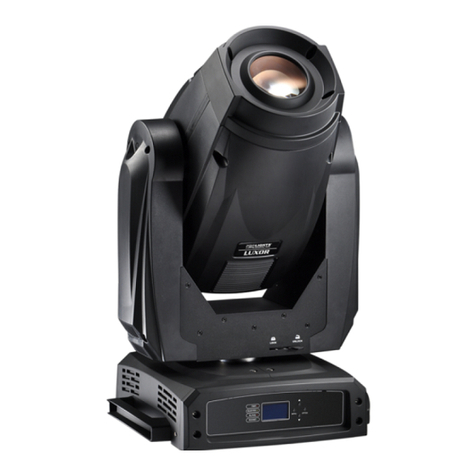
ProLights
ProLights LUXOR user manual

MJ LED LIGHTNING
MJ LED LIGHTNING MJ-3046 user manual

Cameo
Cameo ZENIT W600 SMD user manual

MJ LED LIGHTNING
MJ LED LIGHTNING MJ-2007C-1000 36P1W25DRGB user manual

optonica
optonica 6376 quick start guide
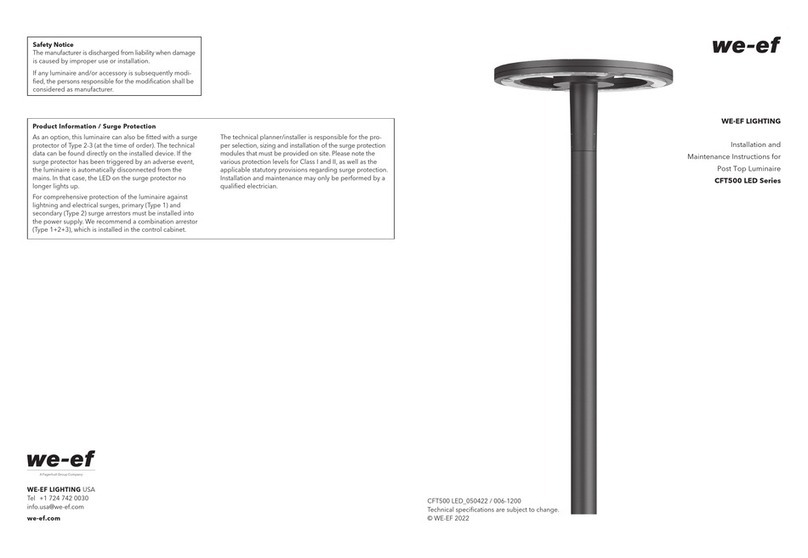
WE-EF
WE-EF CFT500 LED Series Installation and maintenance instructions

